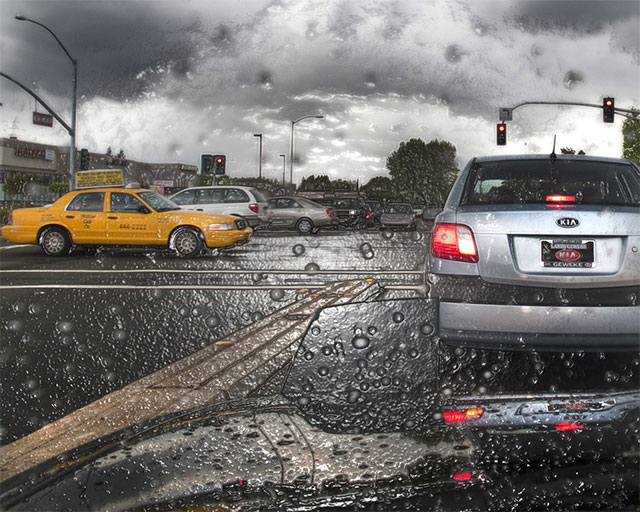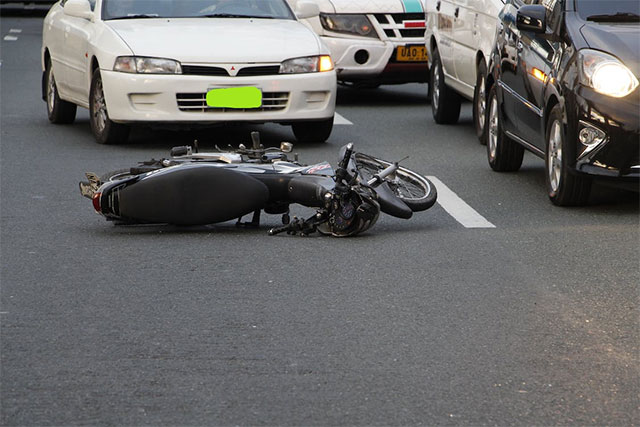When driving conditions are complicated by adverse weather conditions, it can be difficult to navigate through them safely. To avoid accidents and keep yourself and others safe, there are some strategies and tips that can help ensure everyone has a better chance of staying safe and secure.

Driving Tips for Unfavorable Weather Conditions
Challenging weather conditions like heavy rain, sleet, ice, and snow can make for treacherous driving for even the most experienced motorists. Being prepared can help. Here are some things to consider when you must drive in dangerous weather conditions:
- Drive slowly: When weather conditions are unfavorable, your car will not stop as quickly as it normally would. Adjusting your speed to give yourself more time to react is a good idea. Slower speeds also give you more time to react to actions taken by other drivers.
- Avoid following too closely: When roads are icy and wet, give yourself more space between you and the car ahead. If they brake or turn, you will allow yourself more time to slow down or stop on the slick road. Driving experts suggest leaving at least six seconds of following distance when the road conditions are wet or icy.
- Drive with your headlights turned on: When visibility is reduced, driving with your headlights on gives other motorists a better chance of seeing you. It will also help you to see the road somewhat better. Though, if conditions are foggy, use your low beams rather than your high beams. Many states require you to drive with your headlights on if it is raining hard enough to require windshield wipers to be turned on.
- Defrost frequently and use your windshield wipers: Keeping your windshield clear can be helpful when visibility is challenging. Turn on your car’s defrost setting and your windshield wipers. This will prevent further visibility problems so that you can see as well as possible in inclement weather.
- Avoid cruise control: While cruise control is a helpful feature for keeping a consistent speed on long trips, it is unsafe when weather conditions are threatening road safety already. Cruise control can make getting your car under control more difficult if your car slides.
- Sudden movements can be deadly: Traveling on slick roads means your car will not have the traction it would have under dry conditions. It is suggested that you avoid sudden movements when possible. No hard braking, sudden lane changes, or sharp turns at inappropriate speeds when driving in adverse conditions. If you need to change lanes, turn or stop, do so gradually so you can retain control of the car.
- Pull over when necessary: If you are driving during treacherous conditions, know your limitations. If the weather becomes too dangerous to drive in, recognize this and pull over until the conditions improve.
Being Prepared for Bad Weather
The tips above can help you stay safer when driving in adverse weather conditions. You can do some things before you drive to keep yourself safer. These tips are listed below:
- Make sure your tires are in good shape. Ensure that their tread is not overly worn and that you replace them if it is. If you live in a climate with severe winters, make sure to use snow tires or chains on your tires to provide traction on slick roads.
- Fill up your gas tank. Rough weather and an empty tank do not go together. Ensure your tank has enough gas to get you safely where you are going. You do not want to be on the side of the road in an ice storm with an empty tank.
- Leave an emergency kit in your car. You should include a first aid kit, a flashlight, some snacks, water, blankets, and an extra phone charger in this emergency kit. For climates with severe winters, include a shovel, an ice scraper, hand warmers, and sand or cat litter to provide traction if you are stuck.
- Replace your worn windshield wiper blades. When your windshield wipers are in good repair, they can increase your visibility in poor weather.
- Perform regular car maintenance. Your brakes, battery, and heater need to be regularly checked. Make sure all the fluid levels are topped off, especially antifreeze. Windshield wiper fluid can be replaced with a non-freezing type formulated for winter weather.
- Keep an eye on the weather. As conditions change, your weather app will let you know. By paying attention to weather predictions, and traffic reports, you can get to your destination far more safely by heeding their advice.
Get There Safely or Stay at Home
If the weather is causing dangerous road conditions, stay home if at all possible. If staying at home is not feasible, drive safely by slowing down, not following too closely, turning on your headlights, and keeping your windshield clear. Pay attention to your car’s maintenance needs and keep your tank full. By doing these simple things, you stand a better chance of avoiding car accidents and arriving at your destination safely.













